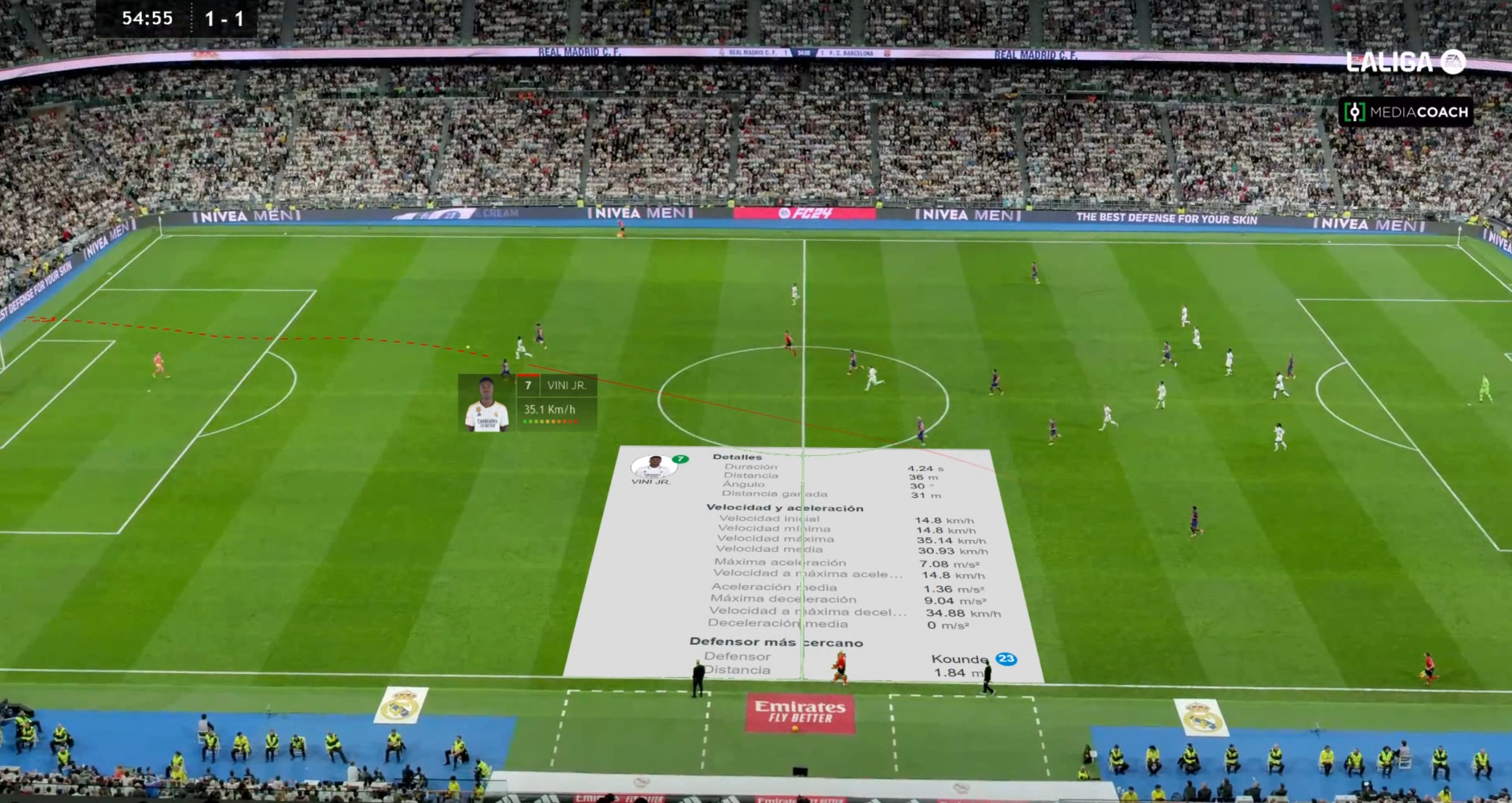
05 Ago Maximize Your Team’s Performance: The Key to Worst Case Scenarios (WCS)
Introduction
In professional football, understanding and optimizing players’ physical performance is essential for team success. One of the most advanced concepts in this field is the Worst Case Scenarios (WCS). Below, we explain what WCS are, their importance, and how they can be practically applied using real data from the #Clásico match in Matchday 32 of the 2023/24 LALIGA EA Sports season between Real Madrid and Barcelona.
What are Worst Case Scenarios (WCS)?
Worst Case Scenarios (WCS) refer to the moving time windows during a match in which a player reaches their highest levels of physical exertion. These windows can be 1, 3, or 5 minutes and are evaluated in terms of:
- Total distance covered
- Distance covered at a speed above 21 km/h
- Distance covered at a speed above 24 km/h
The Utility of WCS in Sports Performance
WCS allow coaches and physical trainers to identify the moments of highest demand during a match. This has several practical applications that can transform team management:
- Optimizing Training:
- Individualizing Training: Allows for personalized training according to each player’s specific needs, better preparing them for the peaks of exertion they will face in matches.
- Injury Prevention: Helps manage workload and prevent injuries by understanding the physical limits of players.
- Game Strategy:
- Tactical Planning: Understanding when and where WCS occur allows coaches to adjust strategies to maintain team intensity at critical moments.
- Efficient Substitutions: Enables informed decisions on substitutions, ensuring players do not become overly fatigued.
- Recovery and Preparation:
- Recovery Programs: Facilitates the creation of specific recovery programs for each player after matches.
- Physical Preparation: Helps prepare players physically for the highest levels of demand they may face in future matches.
Real Example from the #Clásico (Matchday 32, 2023/24 Season)
To illustrate how WCS are applied in practice, below is an example of real data from the match between Real Madrid and Barcelona, analyzing WCS indicators for Vinícius Júnior in a 1-minute window.
Data for Player Vinícius Júnior (Real Madrid)
- Distance Covered (1-minute window):
- WCS Distance: 200 meters
- WCS Distance m/min: 200 meters per minute
- Number of Actions During WCS: 1
- Average Distance per Action: 200 meters
- 85% WCS Distance Threshold: 170 meters
- 85% WCS m/min Threshold: 170 meters per minute
- Number of WCS >85% in Match: 2
- Average WCS >85% in Last 2 Months: 1.8
- Max WCS in Last 2 Months: 200 meters
- Part of the Match: 2nd half
- Start Minute: 54
Conclusion
WCS provide critical information to optimize players’ physical performance. Using this data, coaches can personalize training, manage workload, prevent injuries, and make precise tactical adjustments during matches. In the case of the #Clásico, the data shows how players like Vinícius Júnior faced peaks of exertion and how this information can be used to improve their preparation and future performance.
It is essential for coaches to work closely with their physical trainers to incorporate these advanced metrics into their daily planning. LALIGA, through Mediacoach, offers detailed reports for each team, including individual analyses of every player who has participated in any of the 380 matches in the competition. This tool is invaluable for maximizing team performance and strategy.


